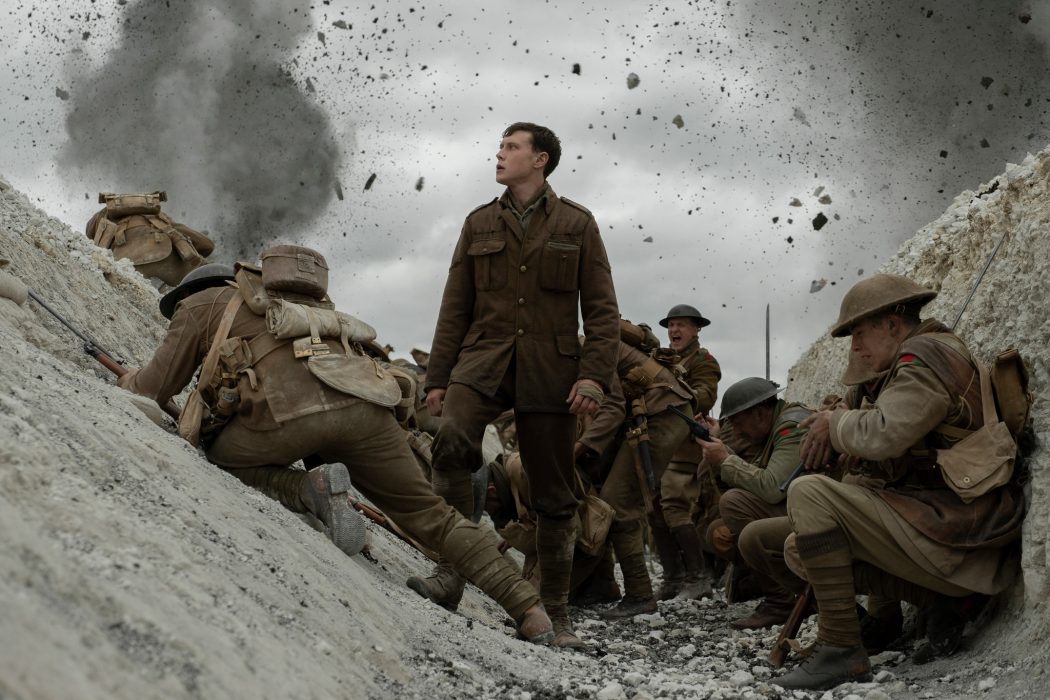1917: The future of war movies
The word “gimmick” is bound to show up when reading reviews for the Oscars front-runner “1917.” Meaning an idea or feature used solely to attract attention, “gimmick” is often used in a negative context.
In the case of “1917,” gimmick refers to how the movie appears to be shot in one-take, like a theater production. This aspect of the film, however, is only the product of careful planning, visual effects and editing. The shots, long as some may be, are stitched together to create the illusion of one continuous take.
According to the film’s editor, Lee Smith, and director, Sam Mendes, the shortest take was 39 seconds, while the longest sat at eight and a half minutes.
So is the “one-take” really just a gimmick?
No. And that is an achievement by itself.
On the surface, “1917” is a simple film: two soldiers must deliver a message across enemy lines or their comrades will die. There are no flashbacks, jumps in time, extreme camerawork, superfluous computer-generated imaging, choreographed action scenes and despite taking place during a world war, there is minimal gunfire or fighting. Something as technical and obvious as long, continuous takes should stick out, but they don’t.
For the audience, the absence of cuts only contributes to the simplicity of the film. For the filmmakers, the absence of cuts must have created one of the most complicated projects in recent memory.
The amount of work put in compared to how much work shows is astounding. Sets had to be precisely measured out and rigged to transport the cameras, crew and actors across the scene at the proper speed. With no way to artificially light the constantly moving characters and sets, only perfectly consistent, natural lighting could be used.
The actors, as well as the cameramen, boom operators and others, had to rehearse shots for months in advance leading up to the principal photography to maintain the pacing of the film.
Much of this technical achievement can be attributed to Roger Deakins, the movie’s cinematographer, who will doubtlessly win his second academy award in February. One scene, taking place among the ruins of a town, involves a massive rig swinging lights across the sky, choreographed with the actors’ movements.
In a decade of cinema dominated by superhero battles and galactic war, “1917” offers a grounded and realistic depiction of humanity. The film never attempts to glorify war or violence — at one point a character refers to war medals as just tin with a ribbon. “1917” remains solely concerned with the kinship and emotions of young people at war.
The movie grounds itself in the present, something modern films — or people in general — rarely do. Its one continuous shot leaves no room for stagnation or any moments out of time. While this style surely constricts the possibilities of the plot, opportunities for creative characterization and greater audience empathy open up.
Mendes does not reveal backstories or use traditional characterization, connecting to the audience through familiar themes of family, friendship, courage and fear.
From the opening shot of the film, the two leads are established to be close, with no reminiscing about their past together required. How and when they bring up their families and memories from home says just as much as — if not more than — any backstory could.
In addition to feeling like real time, the camera is nearly always head level. Suddenly, the audience is the third man in the mission. It is always placed right behind or in front of them throughout the movie. There are no cuts or breaks to provide any relief from the characters’ emotions. The audience, too, must ride out all the soldiers’ feelings of grief, peace, terror and anxiety.
Mendes, Deakins and all the cast and crew of “1917” have created one of the best war movies of the 21st century. From the gorgeous cinematography to the brilliant acting, “1917” deserves the many accolades it has received this award season.
*Photo courtesy of Universal Pictures.
—william.bultez@aggiemail.usu.edu
@willistheginger

